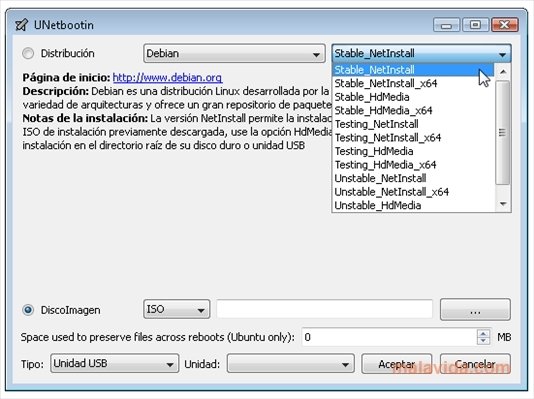

Expect it can run on almost any computer, unlike the official Chrome OS that requires a real Chromebook.
#UNETBOOTIN PERSISTENT FULL#
But for that, we already have some Android emulators for windows and full Android operating systems for computers as well.ĬubLinux is a perfect lightweight operating system with an exact interface like the Chrome OS. Despite the fact that Chromebooks are getting android support. In reality, you can do more things than a real Chromebook. After a few seconds, you’ll be logged into CubLinux, and the very first step you can do is connect to Wi-Fi and Sign-in with your Google account.Īs Cublinux is based on Fedora, you can also install.

You will see a new menu saying “ Cub Linux persistence” choose this menu using keyboard arrow keys and press enter key. In some cases, you may have to enable USB booting from BIOS settings.

Restart your computer and choose boot device options (it might vary for different computers) and choose the USB you had plugged into your computer. We actually added a new menu named ‘ CubLinux persistence‘ and added the word persistence just before the boot=… line. Linux /casper/vmlinuz.efi persistent boot=casper quiet splash.
#UNETBOOTIN PERSISTENT CODE#
“This code is needed to be added = (Skip this if you already have the grub file and replaced). 8000MB of persistence will not work on FAT partition of your drive. Or you can get this grub It is a zip you just have to extract and replace in the directory. Rep: Unetbootin/LILI and persistence that doesnt work. Open the grub.cfg file with NotePad++, and add the below code. It will look like this after adding the code. Access to the USB Drive/boot/grub/ grub.cfg and open it with Notepad or Notepad++. On my PC, if the BIOS is set to legacy booting, then the Unetbootin-created Ubuntu 16. Now you need to modify the grub.cfg file in order to use persistence in UEFI computers. You need to tick on Diskimage and choose the ISO file and in the preserved field, enter 4096 to make persistence of 4GB. TIP: You can also use UNetboootin to make bootable USB and create a persistence file at once. It takes a few minutes and after it will prompt again to create a partition for the created casper-rw file, Allow that as well. Remember: You’ll be prompted for label name and volume name keep it casper-rw and in Size put “4096” and click ok. Open RmPrepUSB and click on Create Ext2/3/4. Get Linus ISO and make a bootable USB using the RUFUS tool.


 0 kommentar(er)
0 kommentar(er)
